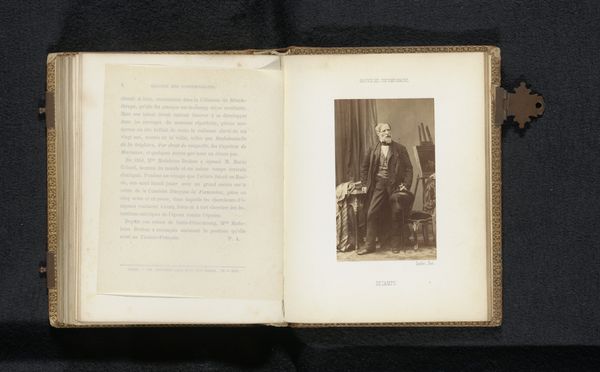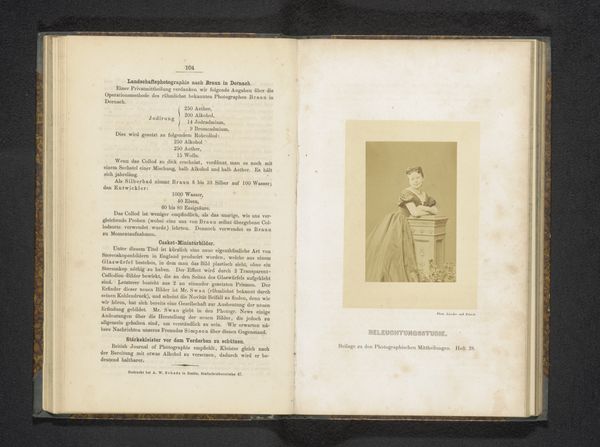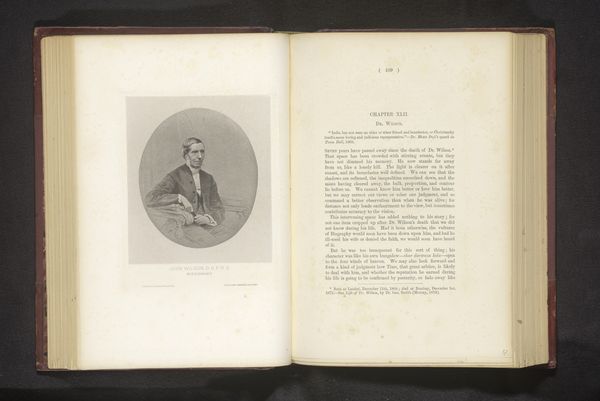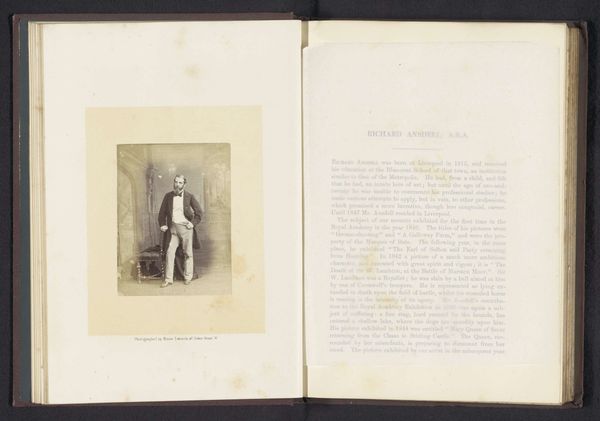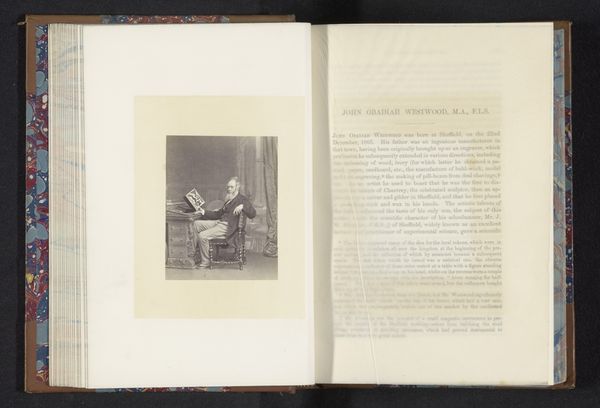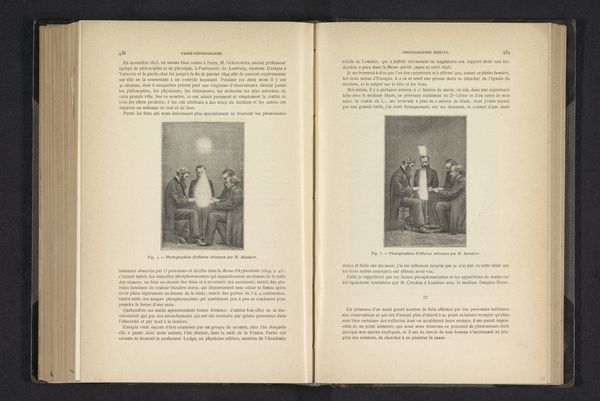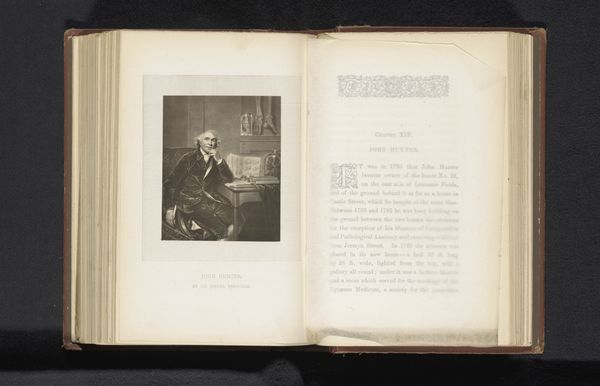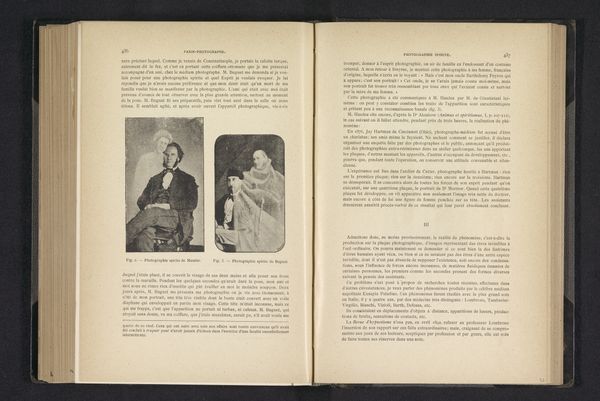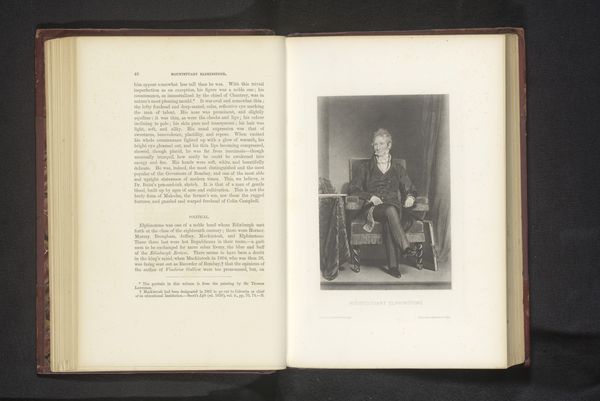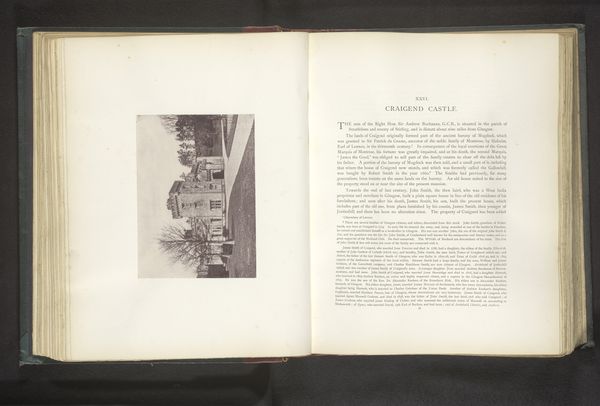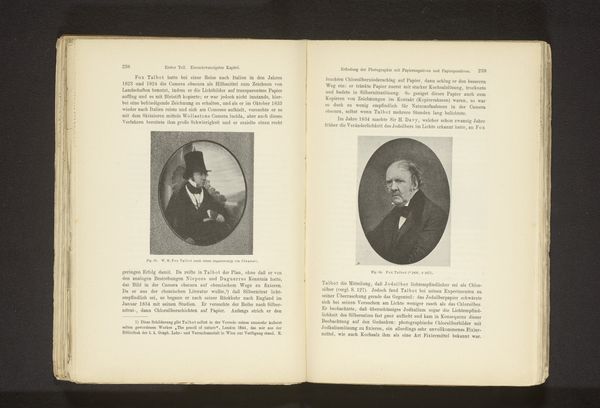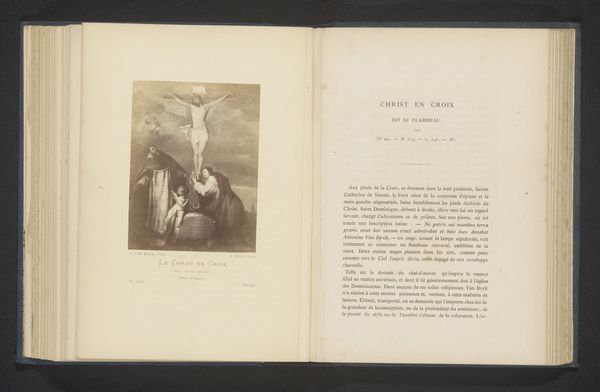
Sir Frank H. Souter, C.S.I., superintendent of police, Bombay. Born 1831, died 1888 before 1888
0:00
0:00
anonymous
Rijksmuseum
print, photography, albumen-print
#
portrait
# print
#
photography
#
genre-painting
#
history-painting
#
albumen-print
Dimensions: height 103 mm, width 74 mm
Copyright: Rijks Museum: Open Domain
Editor: Here we have an albumen print titled 'Sir Frank H. Souter, C.S.I., superintendent of police, Bombay' made before 1888 by an anonymous artist. What strikes me is the contrast of this stark portrait set against the text surrounding it within the bound book. How do you read this portrait? Curator: Well, consider albumen prints – mass-produced images during a period of rapid colonial expansion. This portrait wasn't necessarily meant to be unique. The creation process involved coating paper with egg white, making it sensitive to light, then using a negative to create the image. It's a rather involved, hands-on process that resulted in readily available copies, playing an interesting role in circulating representations of authority within the British Empire. Think about the materials and labour embedded in even this seemingly simple portrait! Editor: So, it’s less about the individual depicted and more about the system that produced the image? Curator: Exactly. Souter, as a figure of authority in colonial Bombay, gains symbolic power through the technology of reproduction. The accessibility of these prints reinforced a specific social order and propagated certain visual narratives related to governance and power. Editor: That makes me consider how photography influenced the perception and exercise of colonial power during that era. What did it mean for images of British officers to circulate so widely? Curator: It made power visible, accessible, almost tangible. It presented a specific kind of authority – rational, ordered, and documented. However, we should also consider how the recipients of these images, both British and Indian, interpreted them. The very materiality of the photograph, its fragility and reproducibility, offered ways to subvert or reimagine the intended message. Editor: I never thought about that. It adds another layer of understanding. Curator: The circulation of this image allows for reflection upon colonial methods, while recognizing that these images, born of a particular medium and labor, carried with them immense implications. Editor: Thanks, that was a revealing way to look at the photograph!
Comments
No comments
Be the first to comment and join the conversation on the ultimate creative platform.
